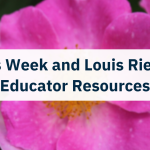How to Write a Grant 101: A Crash Course
Writing a grant can be an intimidating and overwhelming process. Deadlines are tight, applications are long, and writers are under considerable pressure to compose a successful grant. Some schools have designated grant writers. However, most do not. The latter situation is when educators and support staff must step up and write grants to secure funding for educational resources. If you happen to be in that situation, don’t sweat! The following will provide an overview of what to expect and include in a grant submission.
Genera Grant Structure
There are two main types of grants: foundation and government. Examples of foundation grants include community foundations, independent and family foundations, and corporate foundations. Government grants are available at the federal, state, and local levels. While foundation and government grant applications differ, each has similar elements. The general structure of a grant includes:
-
- Summary
- Introduction of the School
- Needs analysis
- Description of project and objectives
- Project management plan and timeline
- Project evaluation metrics or goals
- Budget
Other sections could include appendices, supporting documents, and opportunities for securing future funding.
Preparing to Write the Grant
Before starting the grant writing process, there are a few things to keep in mind:
- Read the grant information. Then read it again. Then read it one more time. Make sure you understand what kind of projects the grant aims to support, and ensure that you are eligible to apply and a great fit for the evaluation criteria.
- Ensure that the grant description fits your needs without stretching or modifying your objectives, goals or activities. Most government grants require extensive monitoring, evaluation, and reporting to keep the funds, so accommodating your objectives to meet their description is risky and irresponsible in the long run.
- Discuss the grant with your principal or superintendent. They often need to be on board with the grant you are applying for, as larger grants require a signature from the school’s leadership.
- Collect as much information about your school as possible. This includes its mission, vision, list of school board members, learner numbers and demographics, proof of school’s 501(c)(3) non-profit status if applicable (or the name of your applicable partner), and information such as similar or relevant programs that your school has previously run and grants that have been previously awarded.
Using the information above as a framework, here are some tips on tackling each grant application section.
1. Summary
The summary is arguably one of the most important sections of the grant. It will provide a succinct description of the essence of the project, summarizing the key objectives and explaining what you wish to accomplish. The summary should only be about two to three paragraphs or, at a maximum, up to a page, depending on the specific grant requirements. Make sure to include who you are, what you want to do, how you want to do it, how you’ll evaluate how well you’ve done it, the impact you’ll have on your target audience and the amount of money you’ll need to accomplish the project.
2. Introduction of the School
The second section will introduce your school, establishing its credibility and, most importantly, your team’s ability to achieve the objectives and activities outlined in the proposal successfully. It will describe the vision and mission of the school, provide facts about the number and demographics of the learners, and outline brief biographies of the school board members and key staff members. For a foundation grant, this section provides the opportunity to illustrate how your school’s vision and mission align with that of the foundation.
3. Needs analysis
Also referred to as the needs assessment or problem statement, this section outlines the issue you will use the grant money to address. This section provides the opportunity to insert emotion into the application, which helps to create a compelling narrative about the school’s needs. For this section, you will want to break out your best storytelling skills to really illustrate the needs through descriptive text, compelling statistics, quantitative data and testimonials/quotes from influential people. It’s helpful to include information about your community and stories from your learners or educators. It should also include the target audience, description of the geographical area, and how your project plans to address the problem and improve the situation.
4. Description of the project + the goals and objectives
This section will describe the project and offer a realistic, thoughtful solution to the problem. The description of the project must match the funder’s priorities, identify the key people needed for executing the project and explain how these individuals will be a part of the grant project. It should address how the project will continue to support itself after the initial funding ends, like additional grant funding, tax levies, fundraising, donations or other government funding streams. This section will also contain the goals and objectives for the project. Goals are broad statements of what this project will achieve. They are more abstract and conceptual and cannot be measured. On the other hand, objectives must be SMART (Specific, Measurable, Attainable, Realistic, and Timely). A grant submission should have no more than three goals, with subsequent objectives under each.
Establishing the Grant’s Goals
Before writing your objectives, consider the following questions:
Specific: What change do you want to occur?
Measurable: How will you measure this change?
Attainable: How much change do you need for the activity to be considered successful?
Realistic: How realistic is this project? Is it likely to succeed?
Timely: How quickly do you want the results? And, how much is it going to cost?
An example of an objective would be: Increase the numeracy scores of at least 60% of the 9th-grade learners at XYZ High School by 3 points on the NWEA MAP testing within one academic year at the cost of $10,000. Once you create your objectives, be sure to maintain the same wording throughout your application. While it might sound repetitive to you, resist the temptation to use alternative phrasing. It will confuse the reader if the objectives aren’t consistent, and they might not understand what the project is attempting to achieve, which could lead to a rejected application.
5. Project management plan + timeline
This section will provide the blueprint for the project. It will outline the start and finish dates for the specific project activities to meet the project’s objectives. You will assign each project activity to a person or group responsible for managing and accomplishing it. A great way to support this section is to use a visual element, such as a table or chart, to illustrate the project plan, timeline, and deadlines. Additional information, such as meetings, required resources, and extra personnel, could also be listed in the table.
6. Project evaluation
This is an important section because it will demonstrate how you plan to prove that your project successfully achieved your objectives. There are two types of evaluation: formative and summative. Formative evaluations assess the initial and ongoing project activities and provide new insights into how to improve the activities to provide a better outcome. Summative evaluations assess the quality and success of activities at the end of the project. It specifically assesses whether or not the objectives have been achieved.
In designing either evaluation, you must decide whether data will be collected quantitatively, qualitatively, or via a mixed method. In the example objective from Step 4, the evaluation tool is the NWEA MAP test, which will provide quantitative scores from the fall and spring tests. Using both sets of scores from the 9th-grade numeracy test, you can calculate the progression of each student. Your project has achieved its objective if at least 60% of the student scores have increased by 3 points. You should create an evaluation plan for each objective, including who is responsible for collecting and analyzing the data and how often it will happen. It should outline what is to be measured and how it will be gathered and presented.
7. Budget
This section will provide the monetary budget for the project. You can generally break down budgets into two categories: direct and indirect costs. Direct costs include personnel salaries, travel, equipment, resources or supplies, and in-kind contributions. Indirect or overhead costs are building expenses, utilities, insurance, etc. Some indirect costs are not permitted to be included in grants, so be sure to double-check the one you are applying for before building out your budget. While the above framework provides a great starting point, be sure to familiarize yourself with the specific grant you are applying for to make sure you include all of the requirements.
Grant Writing: General Tips and Takeaways
-
- The briefer, the better. Using simple, concise language will translate to an easier-to-read application.
- Follow the style guidelines and remain consistent in format (font size, line spacing, etc.). If there is a specific font, for example, Times New Roman size 12, use it! Grants are not the time to display typography knowledge or exercise a creative license.
- Don’t reword objectives. Write clear objectives using an active voice, and repeat them throughout your grant. Don’t worry about sounding repetitive. If you change the phrasing, your reader might become confused and not fully understand what your project is trying to achieve.
- Ask a colleague or friend to edit it. Don’t solely rely on electronic spelling or grammar checks – not only do grants need to be technically flawless, but they also need to make sense.
- Start writing and applying early. Grants can take considerable time to write, and it can take months or years to receive the funding, so plan ahead for large projects.
Happy grant writing!








